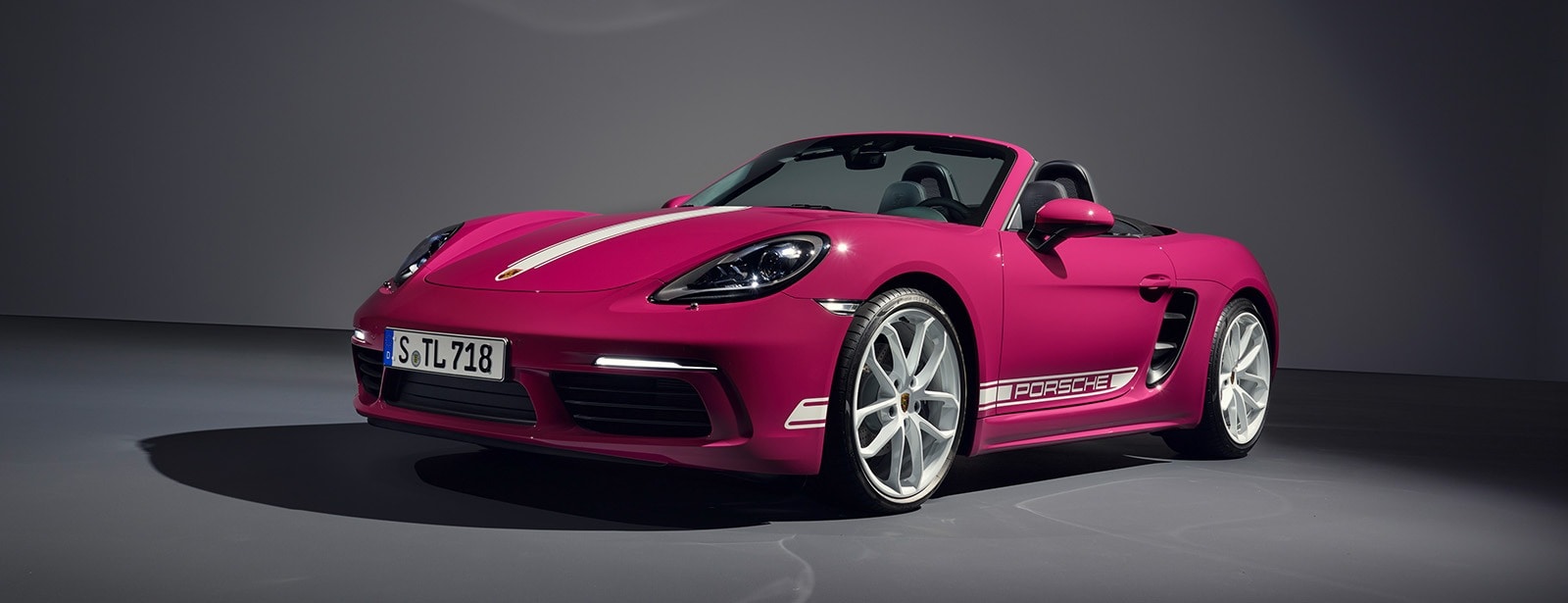
The Porsche 718 Cayman coupe and Boxster convertible are the pinnacle of sports car engineering, with a midengine layout, razor precision, and that unmistakable Porsche feel. They share the same platform and powertrains, so the real decision isn't performance specs or handling prowess. Both deliver the same thrilling ride. It's really about whether you want California's perfect weather flowing through your hair or the intimacy of a closed cockpit. In this article, we explore the differences between the Porsche Cayman and Boxster so you can decide which is right for your Livermore lifestyle.
Design and Body Style Differences
The Cayman has a sleek coupe silhouette with a hardtop and a distinctive rear window flowing into the roofline. The Boxster's soft-top vanishes in less than 10 seconds, transforming from coupe to open-air roadster.
Dimensionally, they're effectively twins. Both have a 97.4-inch wheelbase, a length of 172.4 inches, and a width of 70.9 inches. Only height separates the base trims — the Boxster is 50.4 inches tall, while the Cayman stretches to 51 inches — but the Cayman GTS 4.0 is slightly longer (173.4 inches) and lower (50.2 inches). Design updates stayed evolutionary, not revolutionary, with a clean look, crisp lighting, and the Porsche script bar connecting the taillights.
Both cars display their midengine heritage through prominent horizontal aluminum trunk pieces and massive side air induction ports. Each creates a distinct emotional impact — the Cayman whispers sophistication while the Boxster shouts driving joy.
Performance and Handling
When it comes to Cayman vs. Boxster performance, there's no difference; They use identical engines across the board:
- Base: 2.0-liter turbo flat-four with 300 hp and 280 lb-ft of torque
- S: 2.5-liter turbo flat-four with 350 hp and 309 lb-ft of torque
- GTS 4.0: Naturally aspirated 4.0-liter flat-six with 394 hp and 317 lb-ft of torque
- GTS4 RS/Spyder RS: 4.0-liter flat-six with 493 hp and 331 lb-ft of torque
Performance figures for the 2025 line up by trim, too. You'll sprint from 0 to 60mph in 4.7 seconds with the Base model, 4.2 seconds with the S, 3.8 seconds with the GTS 4.0, and 3.2 seconds with the RS models. The midengine setup keeps both cars planted and responsive on twisty Bay Area roads, and curb weights remain close, so the handling characteristics remain identical between coupe and convertible.
Interior Features and Comfort
Inside either car, you'll immediately understand what driver-focused really means. These aren't luxury lounges — they're command centers built for pure driving joy. The two-seat layout wraps around you perfectly, though taller drivers might brush the headliner occasionally.
The Cayman totals 15.0 cubic feet of cargo space (5.3 cubic feet in the front and 9.7 cubic feet in the rear), while the Boxster offers 9.7 cubic feet (5.3 cubic feet in the front and 4.4 cubic feet in the rear). That's enough for a weekend escape to Napa or a coastal adventure with one carry-on in the back and two more up front.
Comfort features include heated power-adjustable front seats for those chilly Bay Area mornings when fog rolls off the coast and a heated steering wheel for early morning canyon runs. Leather upholstery options add sophistication without screaming luxury, while the digital instrument cluster keeps critical info right where you need it. Seating choices range from supportive standard sport seats for daily driving to hardcore bucket seats that'll keep you planted during track days at Thunderhill.
Technology and Infotainment
Technology stays identical between both models, which means you get Porsche Communication Management (known as PCM) with a touch-screen interface, Apple CarPlay, and USB ports. The standard audio system can be upgraded to a BOSE surround sound system or a Burmester high-end surround sound system.
Standard convenience features make Bay Area living easier. Keyless entry means no fumbling with keys when your hands are full of groceries from Whole Foods, while the garage door opener integrates seamlessly with most residential systems around Livermore. Safety basics include a backup camera to help with tight parking spots, an alarm system, tire pressure monitoring that'll warn you before issues develop, and stability control working behind the scenes.
Optional tech upgrades focus on convenience rather than gadgets. Full power seat adjustments, onboard navigation that knows Bay Area traffic patterns, and adaptive cruise control for those Highway 580 commutes. The interface philosophy stays refreshingly simple — driving comes first, and digital distractions are minimized.
Pricing and Value
Pricing between these models stays remarkably close, which tells you something about Porsche's confidence in both designs. The 2025 Cayman starts at $75,400, while the Boxster begins at $77,600.
Ownership costs reflect the Porsche badge's premium positioning. Plan on roughly $1,192 annually for maintenance — 83% higher than the industry average of $652. But here's what that money buys: legendary German reliability, extensive dealer networks with genuine expertise, and resale values that'll make your accountant smile. In the Bay Area's competitive luxury market, these models hold their value exceptionally well, often better than many investments. Think of it as paying for peace of mind and automotive excellence.
Which Porsche 718 Is Right for You?
Your choice boils down to lifestyle. If you want to feel the wind in your hair and experience California's perfect weather year-round, the Boxster's convertible top transforms every drive into something special. If you prefer the clean lines of a coupe with slightly better structural rigidity and a touch more storage, the Cayman might be right for you. Performance, handling, and build quality remain the same, so there's no wrong answer from an engineering perspective. Visit us at Porsche Livermore and test-drive both to discover which one fits your driving style and lifestyle needs.